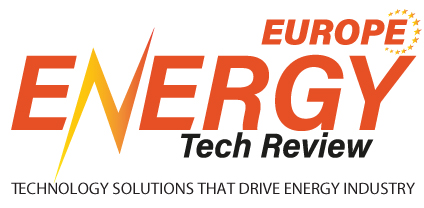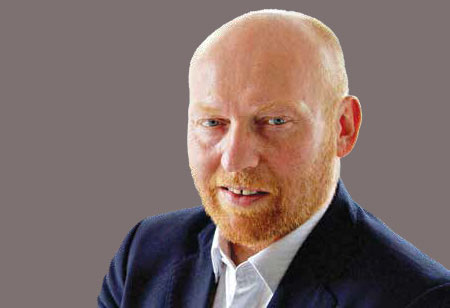Dr. Tryggvi Thor Herbertsson is the Chairman of the Katanes project, the Chairman of Qair Iceland H2 and the Head of Hydrogen Strategy for the Qair Group.
The Katanes Project is an 840 MW green ammonia project located at the Grundartangi industrial port in Iceland. The Project is developed in three equally sized tranches. The facility is the first of a new generation of ammonia plants designed to handle intermittency associated with renewables while remaining economical. To begin with, the ammonia will mostly be exported from Iceland to mainland Europe. The Project is developed by the international IPP Qair. The anticipated Commercial Operation Date (COD) is 2030.
Ammonia is Currently the most Economical Energy Carrier
In the face of climate challenges and the pressing need for global decarbonization, ammonia is emerging as a pivotal element in the transition towards a sustainable energy system. Historically, ammonia has played a central role in global agriculture, with approximately 183 million tons (Mt) produced annually, around 85% of which is used in fertilizer production. Beyond this, ammonia finds applications in diverse industrial processes ranging from pharmaceuticals and refrigeration to mining and water treatment.
Yet, as the energy transition accelerates, ammonia is acquiring a new identity, not merely as a commodity chemical, but as a critical enabler of low-carbon energy systems. Its properties as an efficient hydrogen carrier, its storability and its capacity to serve as a carbon-free fuel for power generation and maritime transport position it uniquely at the intersection of climate ambition and industrial transformation.
Official international studies anticipate a dramatic surge in global ammonia demand, projecting volumes could rise to 688 Mt annually by 2050 under a 1.5°C scenario, nearly four times current production. However, this anticipated growth faces a profound challenge: today, over 99% of ammonia production remains fossil-fuel-based, primarily dependent on natural gas or coal. This contributes heavily to emissions and exposes supply chains to volatility.
Against this backdrop, green ammonia, produced via water electrolysis powered by renewable electricity and synthesized with atmospheric nitrogen, emerges as a compelling solution. Yet, despite its promise, green ammonia remains nascent. The sector faces significant barriers, particularly related to high capital costs and limited commercial maturity. Even under optimistic assumptions, where every announced green ammonia project reaches commercial operation, global capacity would reach just 184 Mt per year by 2038, far short of the 566 Mt per year required by mid-century. This is the critical gap that the Katanes Project aims to address.
Flexibility is Key
Located in Grundartangi, Iceland, the Katanes Project harnesses the country’s access to renewable resources, including hydro, geothermal and wind energy, to develop one of Europe’s first largescale, flexible green a m m o n i a production facilities.
Designed with a total capacity of 280 MW, the Project will annually produce around 32 kilotons of green hydrogen, which, when combined with nitrogen extracted from air, will yield around 175 kilotons of green ammonia per annum.
“More than a conventional production plant, katanes represents a new class of dynamic, optimized infrastructure designed to match the intermittency of renewable energy sources”
More than a conventional production plant, Katanes represents a new class of dynamic, optimized infrastructure designed to match the intermittency of renewable energy sources. Its core components include:
• A water electrolysis system, powered exclusively by fully RFNBO-compliant renewable electricity (as is the entire facility).
• A Battery Energy Storage System (BESS) and hydrogen storage infrastructure, which together allow for load flexibility and energy resilience.
• A next-generation ammonia synthesis loop capable of operating at very low capacity, enabling continuous operation under fluctuating power conditions.
• An advanced smart Energy Management System (EMS), orchestrating real-time load balancing and energy smoothing across all subsystems.
• A thermal desalination unit, driven by waste heat from the electrolyzer cooling loop, which produces demineralized water from seawater—minimizing freshwater use and enhancing circularity for sustainability.
This integrated approach enables Katanes to function as a flexible grid load, supporting the integration of intermittent renewables into Iceland’s energy mix. By synchronizing hydrogen and ammonia production with real-time electricity availability, the Project also enhances grid stability while lowering the carbon footprint of chemical production.
The uses of the output products are as thoughtfully planned as the production process itself. A fraction of the hydrogen output will serve domestic hydrogen refueling stations across Iceland already operated by Qair Iceland H2 and its partner Orkan, contributing to the decarbonization of local mobility, particularly in heavy transport. Additionally, a portion of ammonia will be allocated to fuel ammonia-powered fishing vessels, supporting emissions reductions in Iceland’s critical maritime sector.
To begin with, the majority of the ammonia produced will be exported via a dedicated ammonia terminal next to the plant.
Strategic off-take agreements underpin the Project’s commercial model. Long-term offtake commitments not only secure predictable revenue streams but also reinforce the Katanes’ position as market-aligned and commercially viable. The agreed offtake price at COD in late 2030 per ton of green ammonia is very favorable, with revenue projections validated through a detailed financial model.
Well-Versed Project Developer
Beyond technical and financial robustness, the Katanes Project is distinguished by a diverse and strategically aligned partnership ecosystem. Besides Qair Island H2 as the main sponsor, the Project also attracted a renowned industrial, technical and engineering conglomerate as a minority partner.
The value chain guarantees not only delivery capability, but also market resilience, a critical aspect given the evolving nature of energy commodity flows in decarbonizing Europe.
At its core, the Katanes Project represents an innovative response to one of the most complex challenges of our time: how to decarbonize essential industries while maintaining economic viability and securing energy sovereignty. It stands as a flagship project aligned with the European Union’s Green Deal and it directly supports climate neutrality objectives by, i.e., enabling sustainable fertilizer production and the greening of maritime transport.
By combining cutting-edge technology, strategic site selection, robust partnerships and forward-looking market integration, the Katanes Project positions Iceland as a leader in green ammonia production and offers a replicable, scalable blueprint for similar initiatives worldwide. It bridges the gap between climate ambition and industrial reality and in doing so, sets a new standard for sustainable innovation in the chemical and energy sectors. It is estimated that the first Phase will reduce GHG emissions by 2.6 million kilotons in the first 10 years. For comparison, Effort Sharing annual emissions of Iceland are estimated to be around 3.6 million kilotons per annum.












